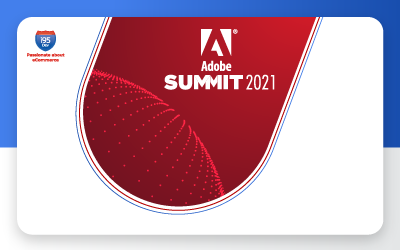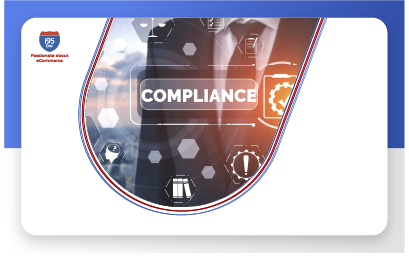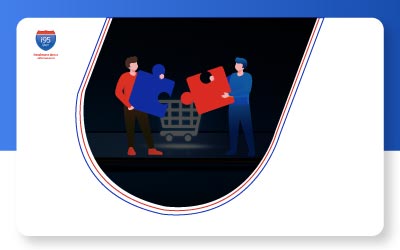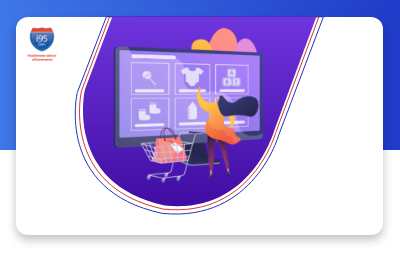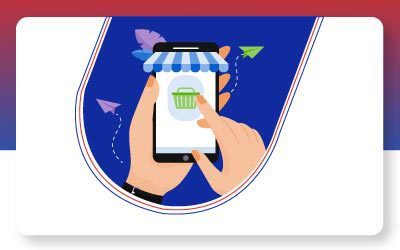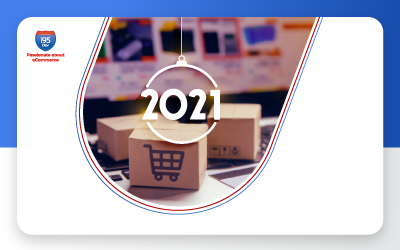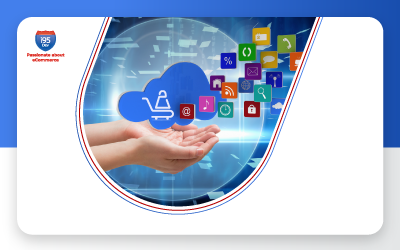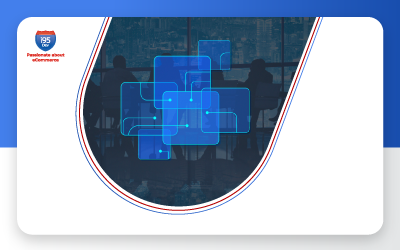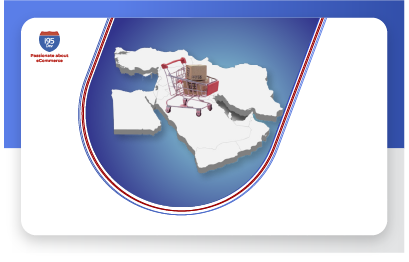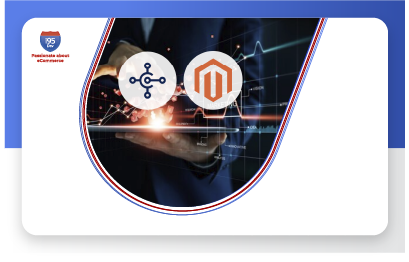June 20, 2016
Discover the best eCommerce
solution for your Dynamics GP
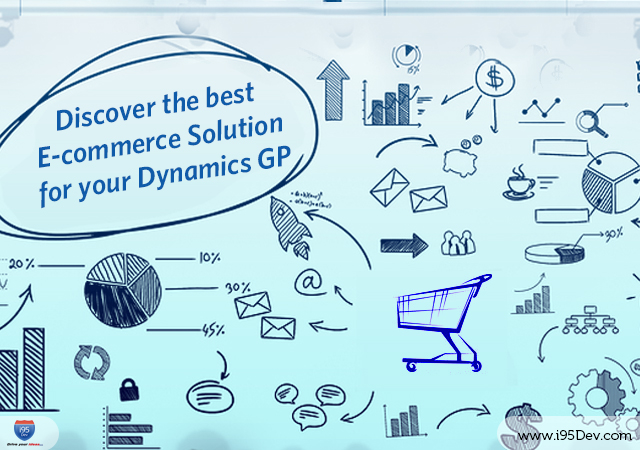
Are you looking for an e-commerce solution for your Microsoft Dynamics GP ERP system? If you just answered yes then please stop right there. Let me warn you, you are preparing your business for failure. Confused? Consider this
The Smiths were an enterprising couple and always had a dream to have their own global fashion brand. But, they had just got married and were not sure if they could leave their existing jobs and take the plunge. Things went on and one fine day they both decided to quit their respective jobs and started selling personalized jerseys in the neighborhood. To keep budgets under control they managed everything in a basic accounting system that allowed them to keep track of orders and gave them a high-level overview of the financial health of their startup.
Things soon changed and their sales started to grow. With sales, the complexity of their operations also increased and they soon found themselves spending more time on managing orders (sales and purchase), and managing inventory than focusing on their product and sales. They recruited few resources to get more hands at work but quickly realized it was not an effective solution.
On one Sunday morning, when Mr. and Mrs. Smith were discussing the direction that they should set for their business they realized that their accounting system was the bottleneck. They decided that they had to fix this problem soon because they were soon planning to add more products to their offering. They immediately called their friend Rob who worked at a software company developing ERP systems for small and mid-size businesses. Rob quickly obliged and worked with Smiths to understand their business and requirements and suggested Microsoft Dynamics GP to them.
In no time, with the help of Rob, they had their Dynamics GP ERP system up and running. The Dynamics GP system streamlined all their operations and soon became the backbone of their business. Smiths now had more time to focus on things more important.
A year passed, their business was flourishing and it was business as usual for them until a customer walked into their store and raved about their products. She lived on the other side of the country and bought their product last year when she was here on vacation. She even mentioned how her friends wanted this one for themselves and how she tried finding them online, only to be disappointed. Hearing this made Mr. Smith wonder where their dream to become a global brand got lost along the way.
Mr. Smith thought about this all night and next day discussed it with Mrs. Smith. After a long discussion, they both decided it was time for them to open an online store; the first and most important step to becoming a global brand. With the newfound excitement, Mr. Smith set off on a journey to find an e-commerce solution that can help them go online. He only had one requirement in mind – the e-commerce should seamlessly work with their Dynamics GP ERP system.
The Dynamics GP ERP system had done its job, it was now an indispensable aspect of their business so much so that it was now the driving force behind their business decisions.
After few days of research, Mr. Smith found an e-commerce solution that was designed for Dynamics GP ERP system and he did not even wink before he decided to buy the solution. He was happy. They could now go online and reach a wider audience without worrying about the operational issues that they once had to deal with their earlier accounting system.
Their e-commerce store was an instant hit and the business started to grow; so much so that the e-commerce store now brought twice as many orders as their brick-and-mortar store. Smiths decided that it was time for them to go global and start selling their product in Europe. For this, they roped in their friend Emile to help them reach out to the consumers in Europe and she was entrusted with two important tasks – 1) customizing the store for the European customers, and 2) reaching out to them to make them aware of their brand and offering.
Emile was very excited and after some initial research, she decided to sell the products only in France and Italy to begin with. For this, she reached out to their e-commerce partner to customize their site in French. But to her disappointment she was told that the e-commerce platform did not support multiple languages or multiple currencies. Disappointed, she decided to use their existing store.
Not letting this affect her enthusiasm, she buckled up and gathered a list of consumers who she wanted to reach out to promote their online store. She went back to the e-commerce partner to understand how she could do this. She was once again disappointed – for two reasons, one their support took more than a week to respond after multiple follow-ups and two because their e-commerce store had very basic marketing support.
Emile quickly took this up with Smiths and they too were disappointed to hear this. Because of lack of other options, they decided to go with their existing e-commerce store and subscribed to a marketing tool that helped them reach out to consumers. Though the process was painful, their campaign was a success and they soon saw orders flowing in. Smiths were both happy and disappointed. Happy because their dream of becoming a global brand was coming true and disappointed because managing all this was becoming a nightmare for them. Their systems were not working in sync with each other and they were spending increasing amount of time on operational activities like customer service (helping customers translate their offering in French) and more to avoid any disasters.
One day when Emile and Smiths were busy taking care of order fulfillment their marketing resource, who they had hired to better reach their customers, approached them for approval of their latest marketing campaign offering 20% discount on all purchases. Because they were so busy, they gave him a go ahead to run the campaign without reviewing.
The orders soon started flowing in and Smiths were happy with the success of the campaign until they found the mistake their marketing resource had made. They soon expired the promotion but to avoid this affecting their brand they decided to honor the promotion; taking a huge hit on their profit.
A few days later, their friend Rob, who had helped them select the ERP system, paid a visit to them and was surprised to see Smiths drained out. Mr. Smith told Rob about their new e-commerce store, their plans to expand to Europe, their experience with the e-commerce partner, and then the marketing promotion disaster. Rob was not surprised, he had seen a number of his ERP customers go through the same cycle.
Rob then explained to Smiths how they had laid the foundation for all this when they adopted their e-commerce system. Not that their e-commerce system was not good, it was just not the right platform for their requirements. He explained to them how their criteria of “adopting an e-commerce platform that seamlessly worked with their Dynamics GP ERP system” was rather misplaced. The Smiths resisted because it was a critical requirement for them. Rob then explained how that should have been ONE of the important requirements, not the ONLY requirement.
Because Smiths were so fixated on their Dynamics GP ERP system and e-commerce working seamlessly with that, they did not evaluate all their requirements before choosing their e-commerce platform. And this is true even if you are looking for an ERP system for your e-commerce setup. Integration should only be one of the many requirements and not the only requirements.
Conclusion
ERP and Ecommerce are two very different systems, each designed for very different purposes. Hence, do you select an E-commerce for an ERP or an ERP for an E-commerce is a wrong question to ask. You should choose an ERP or e-commerce systems that can meet your requirements (integration being one of them).
We do not deny the synergy between the ERP and e-commerce systems; hell, that is where we earn our bread. But, each system offers a lot more functionality than what the other can use or relies upon.
Our advice for selecting an ERP or E-commerce system
The Smiths were an enterprising couple and always had a dream to have their own global fashion brand. But, they had just got married and were not sure if they could leave their existing jobs and take the plunge. Things went on and one fine day they both decided to quit their respective jobs and started selling personalized jerseys in the neighborhood. To keep budgets under control they managed everything in a basic accounting system that allowed them to keep track of orders and gave them a high-level overview of the financial health of their startup.
Things soon changed and their sales started to grow. With sales, the complexity of their operations also increased and they soon found themselves spending more time on managing orders (sales and purchase), and managing inventory than focusing on their product and sales. They recruited few resources to get more hands at work but quickly realized it was not an effective solution.
On one Sunday morning, when Mr. and Mrs. Smith were discussing the direction that they should set for their business they realized that their accounting system was the bottleneck. They decided that they had to fix this problem soon because they were soon planning to add more products to their offering. They immediately called their friend Rob who worked at a software company developing ERP systems for small and mid-size businesses. Rob quickly obliged and worked with Smiths to understand their business and requirements and suggested Microsoft Dynamics GP to them.
In no time, with the help of Rob, they had their Dynamics GP ERP system up and running. The Dynamics GP system streamlined all their operations and soon became the backbone of their business. Smiths now had more time to focus on things more important.
A year passed, their business was flourishing and it was business as usual for them until a customer walked into their store and raved about their products. She lived on the other side of the country and bought their product last year when she was here on vacation. She even mentioned how her friends wanted this one for themselves and how she tried finding them online, only to be disappointed. Hearing this made Mr. Smith wonder where their dream to become a global brand got lost along the way.
Mr. Smith thought about this all night and next day discussed it with Mrs. Smith. After a long discussion, they both decided it was time for them to open an online store; the first and most important step to becoming a global brand. With the newfound excitement, Mr. Smith set off on a journey to find an e-commerce solution that can help them go online. He only had one requirement in mind – the e-commerce should seamlessly work with their Dynamics GP ERP system.
The Dynamics GP ERP system had done its job, it was now an indispensable aspect of their business so much so that it was now the driving force behind their business decisions.
After few days of research, Mr. Smith found an e-commerce solution that was designed for Dynamics GP ERP system and he did not even wink before he decided to buy the solution. He was happy. They could now go online and reach a wider audience without worrying about the operational issues that they once had to deal with their earlier accounting system.
Their e-commerce store was an instant hit and the business started to grow; so much so that the e-commerce store now brought twice as many orders as their brick-and-mortar store. Smiths decided that it was time for them to go global and start selling their product in Europe. For this, they roped in their friend Emile to help them reach out to the consumers in Europe and she was entrusted with two important tasks – 1) customizing the store for the European customers, and 2) reaching out to them to make them aware of their brand and offering.
Emile was very excited and after some initial research, she decided to sell the products only in France and Italy to begin with. For this, she reached out to their e-commerce partner to customize their site in French. But to her disappointment she was told that the e-commerce platform did not support multiple languages or multiple currencies. Disappointed, she decided to use their existing store.
Not letting this affect her enthusiasm, she buckled up and gathered a list of consumers who she wanted to reach out to promote their online store. She went back to the e-commerce partner to understand how she could do this. She was once again disappointed – for two reasons, one their support took more than a week to respond after multiple follow-ups and two because their e-commerce store had very basic marketing support.
Emile quickly took this up with Smiths and they too were disappointed to hear this. Because of lack of other options, they decided to go with their existing e-commerce store and subscribed to a marketing tool that helped them reach out to consumers. Though the process was painful, their campaign was a success and they soon saw orders flowing in. Smiths were both happy and disappointed. Happy because their dream of becoming a global brand was coming true and disappointed because managing all this was becoming a nightmare for them. Their systems were not working in sync with each other and they were spending increasing amount of time on operational activities like customer service (helping customers translate their offering in French) and more to avoid any disasters.
One day when Emile and Smiths were busy taking care of order fulfillment their marketing resource, who they had hired to better reach their customers, approached them for approval of their latest marketing campaign offering 20% discount on all purchases. Because they were so busy, they gave him a go ahead to run the campaign without reviewing.
The orders soon started flowing in and Smiths were happy with the success of the campaign until they found the mistake their marketing resource had made. They soon expired the promotion but to avoid this affecting their brand they decided to honor the promotion; taking a huge hit on their profit.
A few days later, their friend Rob, who had helped them select the ERP system, paid a visit to them and was surprised to see Smiths drained out. Mr. Smith told Rob about their new e-commerce store, their plans to expand to Europe, their experience with the e-commerce partner, and then the marketing promotion disaster. Rob was not surprised, he had seen a number of his ERP customers go through the same cycle.
Rob then explained to Smiths how they had laid the foundation for all this when they adopted their e-commerce system. Not that their e-commerce system was not good, it was just not the right platform for their requirements. He explained to them how their criteria of “adopting an e-commerce platform that seamlessly worked with their Dynamics GP ERP system” was rather misplaced. The Smiths resisted because it was a critical requirement for them. Rob then explained how that should have been ONE of the important requirements, not the ONLY requirement.
Because Smiths were so fixated on their Dynamics GP ERP system and e-commerce working seamlessly with that, they did not evaluate all their requirements before choosing their e-commerce platform. And this is true even if you are looking for an ERP system for your e-commerce setup. Integration should only be one of the many requirements and not the only requirements.
Conclusion
ERP and Ecommerce are two very different systems, each designed for very different purposes. Hence, do you select an E-commerce for an ERP or an ERP for an E-commerce is a wrong question to ask. You should choose an ERP or e-commerce systems that can meet your requirements (integration being one of them).
We do not deny the synergy between the ERP and e-commerce systems; hell, that is where we earn our bread. But, each system offers a lot more functionality than what the other can use or relies upon.
Our advice for selecting an ERP or E-commerce system
- Identify your needs and prioritize them
- do you need an accounting system, an inventory management system, an order management system, an hr management system, or everything. Your needs will help you choose the right ERP system.
- do you need a hosted or on-premise e-commerce system, what features do you need (multi-lingual, multi-currency, marketing promotion, CMS ,etc.), should the platform be customizable, etc.
- Identify all ERP/ E-commerce systems that meet your requirements and compare them based on your prioritized list of requirements.
- Select the ERP/ E-commerce system that best meets your requirements (integration being one of them).
- Do not forget to include aspects like availability of support, availability of extensions and integrations, etc. to your requirement list.
Do you identify yourself with Mr. and Mrs. Smiths? Let us know what you did by commenting below.
PS – If you are looking for a feature-rich and scalable e-commerce system that also seamlessly integrates with Microsoft Dynamics ERP systems (GP, AX, NAV) then contact us here or drop us a line at info@i95dev.com. You can also reach us at 301.760.7499.
Recent Blogs
Subscribe to our blogs




